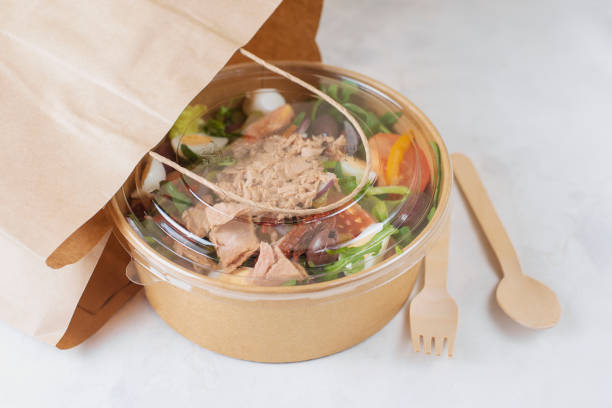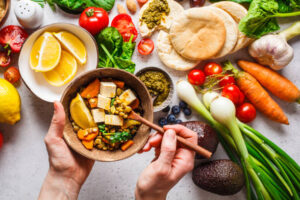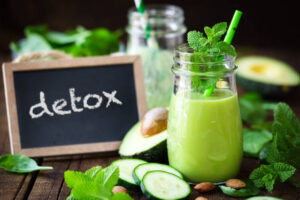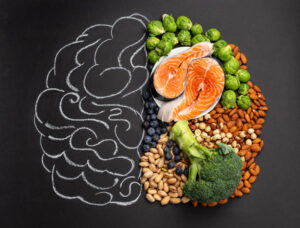There is a growing movement to reduce plastic production, increase recycling, and promote more sustainable food packaging as a result of the environmental and human health effects of non-degradable plastic packaging.
Food packaging accounts for 60% of all plastics produced worldwide. In other words, 228 million metric tons of plastics were used for food packaging alone out of 380 million metric tons.
Currently, businesses and consumers are aware of the importance of sustainable food packaging. Different industries use different methods to reduce their ecological footprint. The packaging industry has been moving away from single-use, non-degradable plastics.
In this article, we explain the benefits of sustainable food packaging, list the types to try (and avoid), and discuss future trends.
The Evolution of Sustainable Food Packaging Technologies
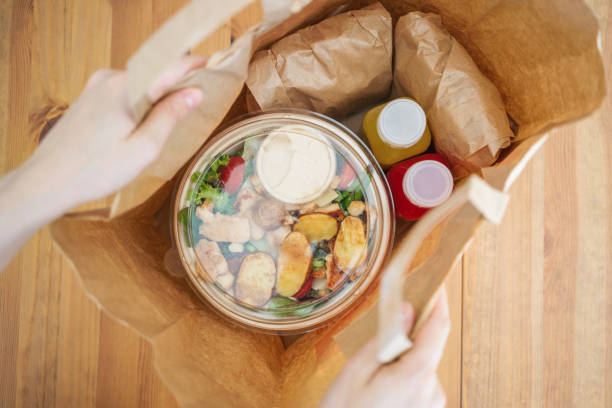
From wrapping food in leaves or animal skins to the modern day, food packaging has come a long way. Sustainable food packaging technology has evolved in a way that preserves food, enhances convenience, and reduces food waste dramatically.
Following is a brief overview of how sustainable food packaging technology has evolved:
- Packaging in the past: Packaging used to be made from leaf, bark, and animal hides in the past. Eventually, packaging materials included metal, glass, and paper.
- Packaging materials used today: Plastic, paper, cardboard, and metal are some of the materials used for sustainable food packaging today. They were developed to address issues related to shelf life, food safety, and convenience.
- Intelligent and active packaging: Active packaging extends the shelf life of food by interacting actively with it. Sustainable food packaging can be modified to reduce oxygen contact with food by adding oxygen absorbers. With intelligent packaging, temperatures, humidity, and gas levels can be detected by sensors that monitor the food environment.
- Eco-friendly packaging: Environmental concerns about packaging waste are growing. A sustainable food package contains biodegradable materials or uses less packaging to be more environmentally friendly.
- Packaging for convenience: A convenience package simplifies the process of using or consuming a product for consumers. Sustainable food packaging that can be resealed, single-served, or microwaved is an example of this type of packaging.
8 Types of Sustainable Food Packaging Options
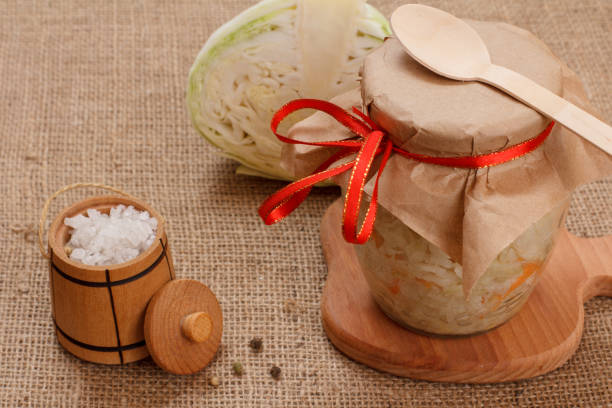
You can easily package food in an eco-friendly way that is better for the environment as well as for your health.
1. Glass
Drinks, sauces, and preserves are commonly packaged in glass. Since it does not change the taste or quality of acidic foods, it is an ideal choice. The glass material is also 100% recyclable and does not release harmful pollutants or chemicals after disposal.
There are numerous benefits and uses for glass in daily life. To facilitate transportation, most of these transportable glass food containers use snap-locking lids with silicone seals or portable cutting boards made of bamboo.
When discarded, these containers can be recycled, reducing the impact of plastics on the planet and ensuring environmental conservation. Unless they are broken, these containers can last 3.5 times longer than plastics.
2. Stainless steel
The high durability, rust-free nature, and heat-resistant properties of food-grade stainless steel make it an ideal sustainable food packaging option. In addition, it can be reused and recycled.
Most bento lunch boxes are made of stainless steel, with a silicone seal containing a lockable steel clip, or with an environmentally friendly, food-safe lid made of silicone. The best of both worlds when it comes to bulk foods like flour, grains, and spices are stainless steel storage jars with airtight lids.
3. Bamboo
In addition to being biodegradable, bamboo is durable and heat-resistant, making it an ideal material for sustainable food packaging.
Bamboo can also be used to make lids for some food packaging including glass jars, lunch boxes, bread boxes, and serving bowls. A food container made from bamboo or another plant fiber is less durable than one made of glass or stainless steel and is more likely to wear and tear rapidly.
4. Gelatin films
It is because gelatin films are nontoxic, inexpensive, and capable of being molded into films that they are becoming more popular for sustainable food packaging. It is generally recognized as safe for use as a food additive by the Food and Drug Administration (FDA).
Among the common foodborne pathogens inhibited by gelatin films are E. coli and Staphylococcus aureus. Compared to conventional plastics, gelatin films are safer due to the active fillers they contain.
5. Kraft paper
Food packaging made from brown paper or kraft paper is one of the most eco-friendly materials available. “Kraft” means strength, effectiveness, and resistance in German. It is made from virgin wood pulp, which makes it organic.
Additionally, they can be composted and recycled, making them sustainable and environmentally friendly. Kraft paper is also recyclable up to seven times due to its durability.
6. Plant-based
It is possible to produce plant-based packaging using maize, corn, bagasse, cornstarch, and other derivative products. In addition to being eco-friendly and biodegradable, these derivatives give the material its eco-friendliness. For these types of packaging to decompose as quickly as possible, they must be disposed of properly in compost.
The cost, sustainability, and ease of production of plant-based packaging make them popular among food companies as viable options for sustainable food packaging.
7. Biodegradable and compostable
Compostable and biodegradable packaging are other options for sustainable food packaging. Few food packaging materials are compostable or biodegradable, but most are reusable or recyclable.
Byproducts of sugar factories are used to make compostable packaging. Another advantage for eco-friendly folks is that they’re safe for microwaves and completely biodegradable. For effective decomposition, you should involve a composting company.
8. Recycled cardboard materials
It is very environmentally friendly to use organic materials and cardboard for sustainable food packaging. Cereal boxes, frozen food boxes, and other packaging materials can often be made from these materials.
Several recycling materials are widely used worldwide, including corrugated boards. Newspapers and cardboard cartons are recycled materials. Some corrugated boards even contain 100% recycled materials. Its average composition is 70%-90% recycled materials.
Furthermore, corrugated cardboard typically does not contain dyes or bleaches, which further reduces its environmental footprint.
Not-So-Eco-Friendly Food Packaging to Avoid
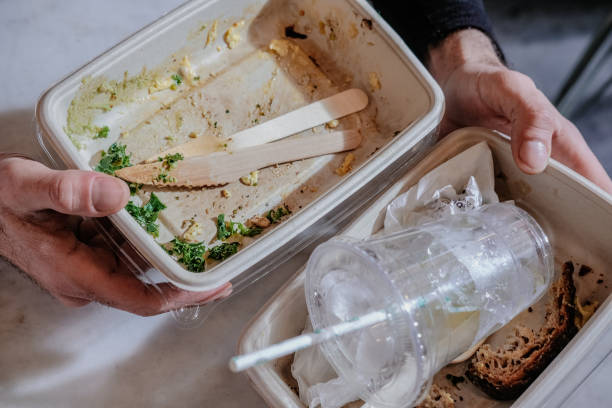
In addition to stabilizers, plasticizers, fillers, flame retardants, and antimicrobials, conventional plastics contain many additives. Petroleum-based plastics do not decompose into natural substances, so they are not biodegradable.
Avoid these plastics.
1. Single-use containers
Plastics that are designed to be used only once before being discarded are called single-use plastics (SUPs). Landfills are filled with these plastics faster, but they never decompose, so they stay there for over a century. Our oceans and seas are also more likely to be polluted by single-use plastics than reusable products. In Europe alone, about 70% of marine litter comes from single-use plastics.
2. Black plastic materials
In most sorting machines, black plastic cannot be detected, making it problematic for recyclability. Moreover, black plastic is not purchased by the global commodities market since it has a low market value, representing only .06% of global plastic sales. The majority of it is disposed of in landfills or incinerated.
3. Produce packaged individually
Produce should never be cut and rewrapped. Natural wrapping protects uncut produce from harmful elements, allowing it to keep its nutritional value. As a result of cutting fresh produce, they are also exposed to oxygen, light, and heat, which results in a loss of vitamins.
Consumers may save time prep-wise, but they will forfeit nutritional value if they wrap their food. As a result of the additional wrapping, the global environmental problem can be exacerbated.
4. Coffee pods
The world’s most consumed product is coffee. There were 166.63 million 60-kilogram bags of coffee consumed worldwide in 2020. Many coffee drinkers have switched to automatic coffee machines that use pods since they are unable to make their coffee the way major franchises do.
There are about 20 billion coffee pods used worldwide, and many of those end up in landfills where they can last for up to 500 years before they are decomposed.
Tips on Reducing Plastic Packaging Usage

- Instead of single-use plastic straws, use bamboo straws or reusable metal for sustainable food packaging. Hygienic maintenance of reusable straws requires cleaning brushes. Paper straws, on the other hand, are eco-friendly and biodegradable.
- Consider investing in a bottle brush and opting for reusable water bottles that are nonplastic or BPA-free for sustainable food packaging.
- Reducing the use of single-use plastic water bottles can be accomplished by using a water filter at home, such as one attached to your faucet or a pitcher with one built in.
- Avoid single-use plastic when you order takeout next time. You should instead use utensils you already own.
- Glass containers are better than plastic ones when it comes to replacing food containers.
- Instead of petroleum-based plastics, choose biodegradable, bioplastic products.
- Reduce your carbon footprint by recycling appropriate plastic food packages.
- Tupperware and plastic zip bags, for example, can be washed and repurposed to reduce their environmental impact.
Pros of Sustainable Food Packaging
- Waste reduction: A sustainable food packaging solution often involves reducing packaging waste by reducing the amount of packaging used.
- Reduced carbon footprint: It is often the case that sustainable food packaging solutions use renewable, recyclable, and biodegradable materials to reduce their carbon footprints.
- Enhanced brand reputation: Packaging waste has an increasingly negative impact on the environment, and consumers are choosing sustainable products more often.
- Saves cost: Companies may be able to save money when they use sustainable food packaging solutions, since they may use less material or more affordable sustainable materials.
- Regulatory compliance: Companies can reduce their environmental impact and comply with environmental regulations with sustainable food packaging solutions.
Cons of Sustainable Food Packaging
- Accessibility: Companies may find it difficult to source sustainable food packaging materials due to their limited availability.
- Expenses: Some companies may not be able to afford sustainable food packaging solutions because they are more expensive.
- Perception: The purchasing decisions of some consumers may be influenced by their perceptions of sustainable food packaging materials.
- Longevity: Packaging materials derived from sustainable sources may not last as long as traditional packaging materials, impacting the product’s protection during shipping and storage.
- Fewer options: Depending on the industry or product, sustainable food packaging resources may not be available in all forms.
Future Trends on Sustainable Food Packaging Solutions
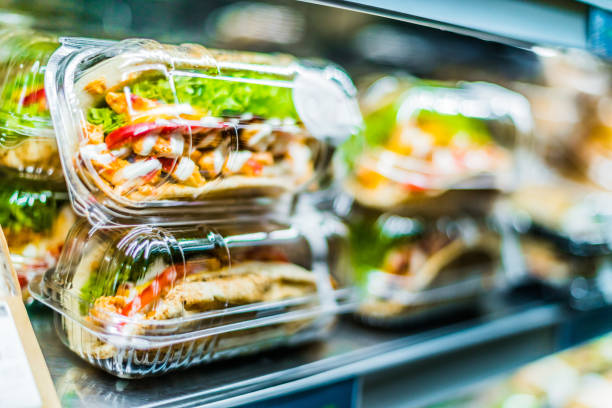
Compared to the plastic grocery bags of the past, the world has come a long way. To wrap or protect the product, and to reuse or recycle after consumption, there are many sustainable food packaging options available today.
Consumers are slowly starting to consider safer and more environmentally friendly alternatives to your products as a business. The number of people who want to protect the environment increases as more people realize the importance of properly sourced eco-friendly materials.
First scenario: Individualism
A person is what they eat! Providing a diverse variety of food choices to customers is a key part of the food industry’s mission. Providing brand differentiation, high volume usage, and high customization make food packaging king. How do regulation and recycling play a role?
Second scenario: 100% green experience
The consumer wants to be able to say they are fighting climate change by supporting packaging-free shops and sustainable food packaging. Consumers seek out climate-friendly experiences through their purchasing decisions instead of being loyal to food brands. What impact does this have on food brands and packaging manufacturers? How can food packaging be made more effective?
Third scenario: Practicality
Consumers are most concerned about convenience, and sustainability is secondary. Fast and convenient food is essential for busy consumers. Designed to suit the lifestyle, sustainable food packaging are portable and lightweight, enabling food consumption on the go. Is digitalization having an impact on food consumption, logistics, and purchase?
Fourth scenario: Closing the loop
Climate change is at the forefront of everything we do. To achieve common sustainability goals, food brands collaborate closely with their sustainable food packaging suppliers and innovate together across the whole value chain. There is a high rate of recycling and closed-loop thinking prevails within the industry as well. How do consumers make decisions in this environment?
In conclusion
There are numerous health risks associated with traditional food packaging, including metabolic disorders and even cancer. Even though it’s impossible to completely avoid these plastics, choosing biodegradable, less toxic, and sustainable food packaging can mitigate the negative health and environmental effects of these plastics.
To reduce the impact on the environment, businesses and consumers must consider eco-friendly food packaging. In the future, we can help reduce pollution, preserve natural resources, and create a healthier planet by using sustainable food packaging such as reusable, recyclable, biodegradable, compostable, and edible packaging.
Food packaging is expected to become more sustainable and responsible as more and more people become environmentally conscious.

